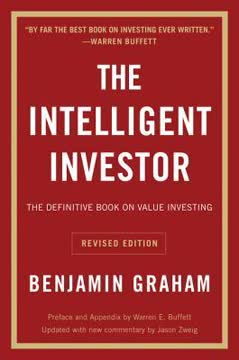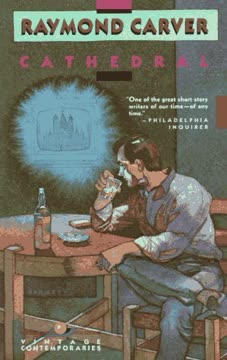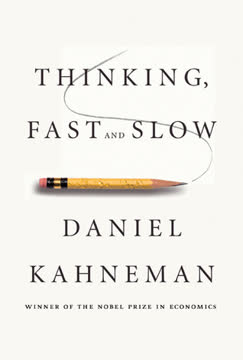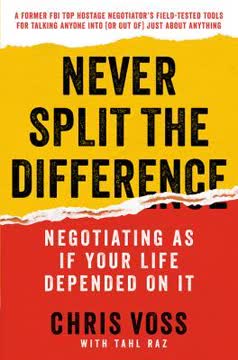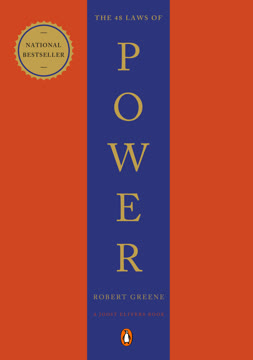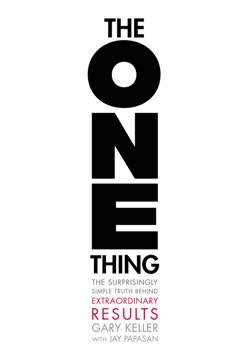重点摘要
1. 思维导图:*终的组织思维工具
思维导图是*终的组织思维工具——大脑的瑞士军刀!
思维导图革新了笔记记录。 它们是从中心思想辐射出来的视觉图表,使用颜色、图像和关键词来组织信息。这种方法模仿了大脑的自然思维过程,使理解、记忆和生成新想法变得更容易。
思维导图的关键特征:
- 代表主要主题的中心图像
- 从中心辐射出的主要分支,包含关键主题
- 支持细节的子分支
- 使用颜色、符号和图像
思维导图调动了大脑的两个半球,结合了逻辑(左脑)和创造性(右脑)思维。这种协同作用增强了记忆保持、问题解决能力和整体认知功能。
2. 通过思维导图解锁大脑的全部潜力
大脑基于两个重要原则运作:协同和重复。
了解大脑的能力。 人类大脑包含大约一万亿个神经元,每个神经元都比标准计算机更强大。这一庞大的网络创造了几乎无限的潜在思维模式和连接。
大脑的关键原则:
- 协同:整体大于部分之和
- 重复:你使用大脑越多,它就越强大
思维导图通过鼓励联想思维和反复接触信息来利用这些原则。通过在想法之间创建视觉连接,思维导图激发了大脑形成新神经通路的自然能力,增强了学习和创造力。
3. 联想和想象在学习中的力量
一张图片胜过千言万语,帮助你运用想象力。
利用视觉记忆。 大脑在视觉识别和回忆方面有着非凡的能力。通过在笔记中加入图像、颜色和空间关系,你可以显著提高记忆和理解信息的能力。
增强学习的技巧:
- 使用生动的图像和符号
- 采用颜色编码
- 在想法之间创建难忘的联想
- 在学习过程中调动多种感官
思维导图自然地结合了这些技巧,使其成为学习、头脑风暴和解决问题的理想工具。通过将抽象概念转化为具体的视觉表示,思维导图使信息更易于获取和记忆。
4. TEFCAS:*终成功公式
试验、事件、反馈、检查、调整、成功
拥抱成长心态。 TEFCAS 是一个强大的学习和成功框架。它强调将失败视为学习机会,并根据反馈不断调整方法的重要性。
TEFCAS 过程:
- 试验:尝试新事物
- 事件:观察发生了什么
- 反馈:收集结果信息
- 检查:分析反馈
- 调整:做出必要的改变
- 成功:实现目标或为下一次尝试学习
这一迭代过程与大脑的自然学习机制一致,可以应用于生活的任何领域,从个人发展到职业目标。思维导图可以用来跟踪进展并可视化 TEFCAS 旅程,帮助保持专注和动力。
5. 通过思维导图技术提升创造力
如果你真的想取得飞跃并增强记忆力,你需要在记住某些东西时积极运用想象力和联想。
培养创造性思维。 思维导图不仅是组织工具,它们还是激发创造性思维的强大催化剂。通过鼓励非线性思维和视觉联想,思维导图帮助解锁大脑的创造潜力。
创造性思维导图技巧:
- 大量使用颜色和图像
- 在想法之间创建意想不到的连接
- 融入幽默和夸张
- 在过程中调动所有感官
- 允许自由联想和“疯狂”想法
定期练习这些技巧可以提高想法生成的流畅性,增强解决问题的灵活性,并提高思维的原创性。随着你对思维导图的熟练掌握,你会发现你的创造能力不仅限于纸上,还会延伸到生活的各个方面。
6. 身体健康提升心理表现
已经发现身体健康与心理警觉和情绪稳定之间存在明确关系。
同时培养身体和心灵。 身体健康在优化心理表现中起着至关重要的作用。定期锻炼、合理营养和充足休息都能促进更好的认知功能、增加创造力和改善情绪健康。
提升心理能力的身体健康关键方面:
- 有氧运动增加大脑的氧气流量
- 力量训练促进整体身心平衡
- 柔韧性练习减少压力和紧张
- 合理营养为大脑功能提供燃料
- 充足睡眠巩固记忆和创造力
将思维导图融入你的健身计划可以帮助你规划锻炼、跟踪进展和可视化目标。这种身体和心理实践的协同作用可以显著改善整体健康和认知表现。
7. 将思维导图应用于日常生活以获得更大成功
思维导图不仅是工作工具——它们还可以帮助你计划和组织社交和个人生活,更不用说帮助你的创造力飞跃到惊人的新高度。
将思维导图融入日常生活。 思维导图的多功能性使其成为广泛个人和职业应用中不可或缺的工具。通过将思维导图融入生活的各个方面,你可以提高生产力、创造力和整体成功。
思维导图的日常应用:
- 工作:规划项目、记录会议笔记、准备演示
- 教育:备考、写论文、组织研究
- 个人生活:设定目标、计划活动、头脑风暴
- 解决问题:分析复杂情况、生成解决方案
- 创造力:开发新概念、探索艺术想法
通过在生活的不同领域中持续使用思维导图,你将发展出更为整合和高效的思维过程。这种信息管理和想法生成的整体方法可以带来更深刻的见解、更好的决策和在所有努力中的更大成功。
最后更新日期:
FAQ
What's "The Ultimate Book of Mind Maps" about?
- Overview: "The Ultimate Book of Mind Maps" by Tony Buzan is a comprehensive guide to using Mind Maps as a tool for enhancing creativity, memory, and overall life success.
- Purpose: The book aims to teach readers how to unlock their brain's potential by using Mind Maps to organize thoughts, solve problems, and plan effectively.
- Structure: It covers the basics of Mind Mapping, the science behind it, and practical applications in various aspects of life, including work, education, and personal development.
- Author's Expertise: Tony Buzan, a renowned expert in the field of mental literacy, shares insights and techniques developed over decades of research and practice.
Why should I read "The Ultimate Book of Mind Maps"?
- Unlock Creativity: The book provides tools to enhance your creative thinking, allowing you to generate innovative ideas and solutions.
- Improve Memory: It offers strategies to boost memory retention and recall, making learning more efficient and effective.
- Life Transformation: By applying Mind Maps, you can improve time management, goal setting, and personal organization, leading to a more successful and fulfilling life.
- Expert Guidance: With Tony Buzan's expertise, you gain access to proven methods that have helped millions worldwide.
What are the key takeaways of "The Ultimate Book of Mind Maps"?
- Mind Mapping Basics: Learn the fundamental principles and steps to create effective Mind Maps.
- Brain Synergy: Understand how Mind Maps align with the brain's natural way of thinking, enhancing learning and creativity.
- Practical Applications: Discover how to use Mind Maps in everyday situations, from planning meetings to personal goal setting.
- Success Formula: The book introduces the TEFCAS model, a framework for achieving success through trial, feedback, and adjustment.
How do Mind Maps work according to Tony Buzan?
- Whole-Brain Thinking: Mind Maps engage both the left and right hemispheres of the brain, promoting holistic thinking.
- Visual Structure: They use images, colors, and curved lines to represent ideas, making information more memorable and engaging.
- Associative Thinking: Mind Maps encourage the brain to make connections between ideas, facilitating deeper understanding and creativity.
- Flexible and Dynamic: Unlike linear notes, Mind Maps allow for the free flow of ideas, adapting to the brain's natural thought processes.
What are the seven steps to making a Mind Map?
- Start in the Center: Begin with a central image or word that represents the main idea.
- Use Images and Colors: Incorporate visuals and colors to stimulate the brain and enhance memory.
- Connect Branches: Link main branches to the central image and sub-branches to main branches, reflecting the brain's associative nature.
- Use Curved Lines: Draw branches as curved lines to keep the Mind Map visually engaging and dynamic.
- One Word per Line: Use single keywords to maximize flexibility and trigger associations.
- Use Images Throughout: Add images to branches to reinforce ideas and aid recall.
- Keep it Simple: Maintain a clear and organized structure to ensure the Mind Map is easy to understand and use.
How can Mind Maps help in everyday success?
- Work Efficiency: Use Mind Maps to plan meetings, organize projects, and enhance productivity at work.
- Personal Development: Apply Mind Maps for goal setting, problem-solving, and personal growth.
- Social Life: Plan events, manage social commitments, and improve communication with Mind Maps.
- Life Planning: Create Mind Maps to visualize and achieve long-term life goals and aspirations.
What is the TEFCAS model in "The Ultimate Book of Mind Maps"?
- Trial: Begin with an attempt or experiment in any learning or problem-solving situation.
- Event: Observe the outcome of the trial, whether successful or not.
- Feedback: Gather information and insights from the event to understand what worked and what didn't.
- Check: Analyze the feedback against your goals to identify areas for improvement.
- Adjust: Make necessary changes to your approach based on the feedback and analysis.
- Success: Use the refined approach to achieve your desired outcome, repeating the cycle as needed.
How does Tony Buzan suggest using Mind Maps for creative thinking?
- Brainstorming Tool: Use Mind Maps to generate and organize ideas during brainstorming sessions.
- Association and Imagination: Encourage the brain to make connections and use imagination to explore new possibilities.
- Visual Stimulation: Incorporate colors and images to engage the brain's creative centers and enhance idea generation.
- Flexibility: Allow for the free flow of ideas, adapting the Mind Map as new thoughts and connections emerge.
What are some practical examples of Mind Maps in action?
- Meeting Planning: Use Mind Maps to organize agendas, track tasks, and ensure all aspects of a meeting are covered.
- Essay Writing: Plan and structure essays with Mind Maps to ensure coherent arguments and comprehensive coverage of topics.
- Language Learning: Create Mind Maps to memorize vocabulary and practice language skills through visual associations.
- Event Planning: Organize events, such as weddings or parties, with Mind Maps to manage details and ensure success.
What are the best quotes from "The Ultimate Book of Mind Maps" and what do they mean?
- "A Mind Map is the ultimate organizational thinking tool – the Swiss army knife of the brain!" This quote highlights the versatility and effectiveness of Mind Maps in organizing thoughts and ideas.
- "Imagination is more important than knowledge, for imagination is limitless." Emphasizing the power of creativity, this quote encourages readers to value and cultivate their imaginative abilities.
- "You are the engineer and architect of your own physical brain, and the universes of thought that reside within it." This quote inspires readers to take control of their mental development and harness the power of their brains.
- "If you never give up, you are a winner." A reminder of the importance of persistence and resilience in achieving success.
How can Mind Maps improve memory and learning?
- Visual Memory: Mind Maps use images and colors, which are more easily remembered than plain text.
- Associative Learning: They encourage the brain to make connections between ideas, enhancing understanding and recall.
- Repetition and Review: Mind Maps facilitate regular review of information, reinforcing memory retention.
- Engagement: By making learning more interactive and engaging, Mind Maps help maintain focus and interest.
What are some advanced techniques for using Mind Maps?
- Paradigm Shifts: Use Mind Maps to identify and explore new frameworks or perspectives on a topic.
- Creative Problem Solving: Apply Mind Maps to brainstorm solutions and visualize complex problems.
- Life Vision Mapping: Create Mind Maps to outline and achieve long-term personal and professional goals.
- Collaborative Mind Mapping: Use Mind Maps in group settings to enhance teamwork and collective idea generation.
评论
《思维导图终极指南》评价褒贬不一。许多人称赞其概念和在组织思维、提高记忆力以及提升生产力方面的实用性。读者们欣赏书中清晰的解释和多样的例子。然而,有些人批评这本书内容重复、过于推销,并且在某些方面缺乏深度。初学者觉得这本书很有帮助,但高级用户可能希望获得更细致的策略。尽管思维导图技术被广泛认为是有价值的,但对这本书的执行效果意见不一。
Similar Books

